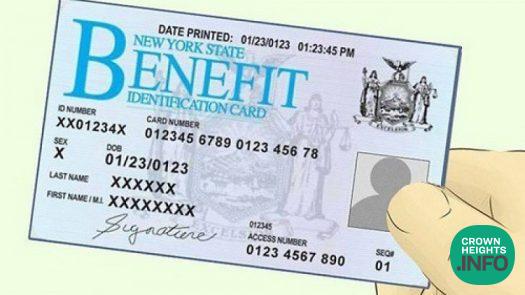
Hochul: More Than 300,000 New York Households At Risk of Losing SNAP Benefits
Governor Kathy Hochul today sounded the alarm on how the Republican budget reconciliation bill will affect the nation’s largest food assistance program, the Supplemental Nutrition Assistance Program (SNAP), undermining a program that millions of New Yorkers rely on to put food on the table every single day. Estimates indicate the reconciliation bill would shift exorbitant costs to states across the country, including New York, where up to an additional $2.1 billion annually would be forced on State and local county governments.
“Every New Yorker deserves to eat every day – plain and simple.” Governor Hochul said. “I’m calling on our congressional leaders to join me and step up to the plate to protect the SNAP funding that families with children, seniors, New Yorkers with disabilities, local farmers, and shop owners rely on to survive.”
The Supplemental Nutrition Assistance Program (SNAP) is a federally funded program overseen by the Office of Temporary and Disability Assistance and administered by local departments of social services. In New York, SNAP helps over 1.7 million households and 2.9 million recipients – most of whom are children, older adults or disabled – afford the cost of purchasing healthy, nutritious food. SNAP benefits are already relatively modest, with an average benefit of $7 per day, but this support is a vital lifeline for households. Over 14 percent of New York’s population, or 1 out of every 7 New Yorkers, relies on SNAP. As a result, SNAP is New York’s most effective tool in combating hunger and food insecurity, which are core priorities of Governor Hochul’s administration.
In addition to supporting individuals and families and fighting hunger, SNAP also provides vital support to local economies. The U.S. Department of Agriculture’s (USDA) own research has shown that investments in SNAP have significant multiplier effects, with every SNAP dollar generating $1.54 in economic activity as recipients spend their benefits in communities, including at grocery stores, farmers markets, small businesses, and more. A total of approximately $7.8 billion in SNAP benefits are issued annually in New York, which means $12 billion in economic activity is generated annually across the state, in urban, suburban, and rural areas alike.
By The Numbers: Shifting Exorbitant Costs onto States and Local Governments
The proposals in the Republican reconciliation bill, supported by all of New York’s Republican Congressional delegation, threaten an effective and efficient program, which research consistently and clearly shows reduces hunger, supports work and stimulates the economy, by imposing exorbitant, unsustainable costs on states:
- The federal government has always funded 100 percent of SNAP benefits. For the first time in the history of the program, under the GOP bill, the federal government is walking away from that commitment by shifting significant portions of the cost onto states, forcing difficult state budgetary decisions. For New York State, Republicans would shift between 15 percent and 25 percent of the benefit cost, totaling up to $1.9 billion annually in additional costs for the State and local governments.
- The federal government and states have historically evenly split the administrative costs of the program. For the first time in the history of the program, under the GOP’s reconciliation bill, the federal government would require states to contribute significantly more for administrative costs, increasing the state share to 75 percent. For New York State, more than $200 million in additional administrative costs would be shifted annually on to the State and local governments.
- The GOP bill also eliminates funding for SNAP education programs that teach recipients how to get the greatest fiscal and nutritional value from their SNAP benefits. This would strip roughly $29 million from New York State and our SNAP recipients.
- In total, the SNAP-related cost shifts put forward by the GOP will cost New York State and local county governments up to $2.1 billion a year, which cannot be absorbed at the state or local level and would cause significant state and local budgetary impacts.
By The Numbers: Changes to SNAP Work Requirements:
Beyond the proposed cost shifts, Republicans also target SNAP recipients by significantly expanding the populations who are subject to overly punitive and administratively complex work reporting requirements without any additional support to those recipients:
- Certain recipients would be required to prove that they work 80 hours per month, with limited qualifying work options and regardless of other factors such as economic conditions. Recipients who are unable to meet this requirement after three months, regardless of the circumstances or reasons why, would then be cut off and prohibited from receiving SNAP for three years.
- Republicans would extend these reporting requirements, harsher time limits, and related prohibitions to more groups, including to families with children as young as seven and to individuals as old as 64. The bill provides no additional funding to support states in assisting these new populations to connect to jobs or training or to provide necessary supportive services such as child care and transportation.
- State flexibility to administer the program would be severely curtailed by limiting states’ ability to request waivers for areas with high unemployment, where residents may be having difficulty finding work due to broader economic factors
- These requirements create barriers for people with unstable jobs, caregiving responsibilities, or health conditions. Enforcing these rules adds complexity, increases the risk of errors, and takes needed resources that would be better used to support beneficiaries and administer the program. In fact, research published on the USDA’s own website shows that increased work requirements reduced SNAP enrollment for those subject to the time limit and found no evidence that they increase employment or annual earnings.
It is estimated that over 300,000 households, including families with children, seniors, youth aging out of foster care, people experiencing homelessness, people with disabilities, and veterans would be impacted by these changes, losing all or a portion of their SNAP benefits, resulting in a loss of hundreds of millions of dollars in SNAP benefits for some of our most vulnerable New Yorkers on an annual basis.












